If you’re planning a road trip through Utah, chances are you’ll end up visiting the magnificent sandstone canyons of Zion National Park. One of Utah’s “Mighty 5 National Parks”, Zion was established in 1919 and holds the distinction as the state’s oldest one.
There’s a lot to see in this spectacular wilderness area, but if you can only spend one day in Zion National Park there’s a few must-see places that you won’t want to miss.
My husband Daniel and I drove through Zion with our VW Rialta motorhome in March 2021. We had an incredible time, but there’s some things we would have done differently if we had it to do over again.
If you’re wondering what to do in Zion National Park in one day, this guide is a good place to start. The park is extremely popular and some advanced planning is helpful to ensure you make the most out of your visit.
One of the first things you need to know about visiting Zion is that a shuttle bus service operates most of the year to all the major sights in Zion Canyon. You can’t just drive into Zion Canyon unless you arrive in the off season (like we did).
More about the Zion Canyon Shuttle System and how to plan your trip to Zion is available in the Planning a Visit to Zion National Park section at the end of the article.
But first – what are the best things to see if you only have one day in Zion National Park?
Note: be aware that Zion Canyon is prone to flash floods. A major flood ripped through Zion Canyon on June 29, 2021 and caused significant damage. Thankfully, no injuries were reported. Be sure to check the Zion National Park web site for current conditions and weather warnings before visiting the park.
Table of Contents
One Day in Zion National Park at a Glance
- 8:00 am – Zion Visitor Center
- 8:30 am – Zion Narrows Riverside Walk (2 miles)
- 11:00 am – Photo Op: Great White Throne and Angel’s Landing
- 11:30 am – Weeping Rock (currently closed)
- 12:30 pm – Lunch at Zion Lodge
- 1:30 pm – Emerald Pools Hike (3 miles)
- 4:00 pm – Drive the Mt. Caramel-Zion Tunnel
- 7:00 pm – Zion Canyon Overlook trail at sunset
One Day in Zion National Park Full Itinerary
Zion National Park Visitor Center
It’s best to begin your one day in Zion National Park at the Visitor Center near the park entrance. Here you can pick up park maps and talk to the rangers about current conditions and weather. For the National Park fans out there, you can get your passport stamped and pick up a collectible coin at the gift store. This is also where you wait for the Zion Canyon Shuttle.
If you have time, the Archaeology Trail near the visitor center is a fun walk to a historic Puebloan food storage shelter. It’s a short .3-mile jaunt to the top of a small hill that only takes about 10-15 minutes to complete.
Zion Narrows Riverside Walk
Zion Canyon is a magnificent 15-mile long gorge with brilliantly-colored sandstone walls and the highlight of any visit to Zion National Park. The canyon begins at the Temple of Sinawava, which is the last stop on the Zion Shuttle and also the end of the Zion Canyon Scenic Drive. From here, a trail leads into the canyon and provides spectacular views of the towering slot canyon walls.
The Zion Narrows Riverside Walk is 2-mile round-trip paved trail that is fairly flat and appropriate for most skill levels. The trail follows the river’s edge for one mile before ending at narrowest part of the canyon. Most visitors turn around here, but those with the appropriate footwear can continue into the canyon along the river bed. Some hikers wade through the shallow water all the way to Big Springs along The Narrows Trail.
This is one of the most popular trails in the entire park so don’t expect solitude on this hike. Be aware that the canyon may close during extreme weather and flash flood events. Waterproof boots and overalls are available for rent from local outfitters for those wanting to continue their hike on The Narrows Trail.
Great White Throne and Angel’s Landing Photo Op
Hiking to the top of Angel’s Landing is one of the most popular activities in the park. If you only have one day in Zion National Park, however, chances are you won’t have time for this strenuous climb to the top of the canyon’s walls (unless you skip a lot of other activities on this list or are an extremely fast hiker). So the next best thing is admiring Angel’s Landing from below in Zion Canyon.
One of the best places to view Angel’s Landing is from the Big Bend scenic pull-out. This is the second-to-last shuttle stop along the Zion Canyon Scenic Drive. This stop is great because it also affords fabulous views of the Great White Throne, an enormous mesa predominantly composed of white Navajo Sandstone that rises over 2400 feet from the valley floor.
Weeping Rock (currently closed)
Weeping Rock is another popular stop in Zion National Park. It’s a large alcove with sandstone walls that have been eroded to look as if the walls are weeping. The rock formations and lush hanging gardens are supposed to be very beautiful, but we didn’t get to see it because the area is currently closed. A massive landslide buried the area in rubble in 2019 and the area is closed indefinitely because the walls are still unstable.
Should this area open again, however, I’d really like to see it. It is only a short .3-mile hike to Weeping Rock from the trailhead and easy to access.
Lunch at Zion Lodge
The next stop on the journey is Zion Lodge. I always enjoy visiting historic lodges and hotels in National Parks. This one is smaller than some of the other National Park Lodges so that it better harmonizes with the landscape and scale of its surroundings. It is also right across the street from the next stop on the itinerary -Â the Emerald Pools trailhead. So you might as well check the Lodge out since you’ll be here anyway.
If you’ve been following along this itinerary, you should arrive around lunch time. Zion Lodge is the only place to eat in the park either in the main dining room (Red Rock Grill) or at the Castle Dome Café (open seasonally). If you brought a picnic lunch, there are plenty of benches and spaces to spread out on the lawn around the lodge too.
Hike to the Emerald Pools
There are three emerald pools in Zion National Park, each feeding water into the ones below. The Lower Emerald Pool is the easiest to access with a 1.4 mile round-trip paved trail leading to it. The pool is less interesting than the canyon wall above it which is streaked with colorful mineral deposits from water dripping down the canyon walls.
For those wanting more of a challenge, the trail continues up the canyon wall towards the Middle and Upper Emerald Pools. The Middle Pool isn’t much further and features a pool of water seeping off the cliff’s edge. The Upper Pool is more difficult to access, however, as the trail gains 620 feet of elevation to reach it. The pool is a deep green color and it is surrounded by magnificent colorful walls.
You can make this loop hike by taking Kayenta Trail and then returning to the lodge on the Grotto Trail. The entire loop of the Emerald Pools Trail is 3 miles with 620 feet of elevation gain.
Zion-Mount Carmel Tunnel
Driving the Zion-Mount Carmel Highway is one of the highlights of any visit to Zion National Park. A 25-mile long road that connects Zion with Mount-Carmel Junction near Kanab, the road has spectacular views and is listed on the National Register of Historic Places. the highway features a 1 mile-long tunnel that was constructed in 1930. At the time of its completion, it was the longest tunnel of its kind in the United States.
If you plan to continue west toward Bryce Canyon National Park or the Grand Canyon, you could save this for when you leave because the tunnel will be on the way. Either way, be sure to make time to drive along the highway and take in the views.
Note that oversize vehicles are required to obtain a special pass before entering the tunnel.
Zion Canyon Overlook
End your one day in Zion National Park on a high note with a hike to Zion Canyon Overlook. Located on the eastern end of the Zion-Mount Carmel Tunnel, the overlook provides stunning views of Zion Canyon in the valley down below…. or at least that’s what I’ve been told anyway. There was no room in the tiny parking lot for our motorhome so missed it during our visit.
My friends Greg and Casey recently visited the park and were kind enough to share a photo with me from their adventure. Sunsets are a particularly popular time to visit the Zion Canyon Overlook so arrive early. A short 1-mile roundtrip walk on the Zion Canyon Overlook Trail is required to reach the viewpoint.
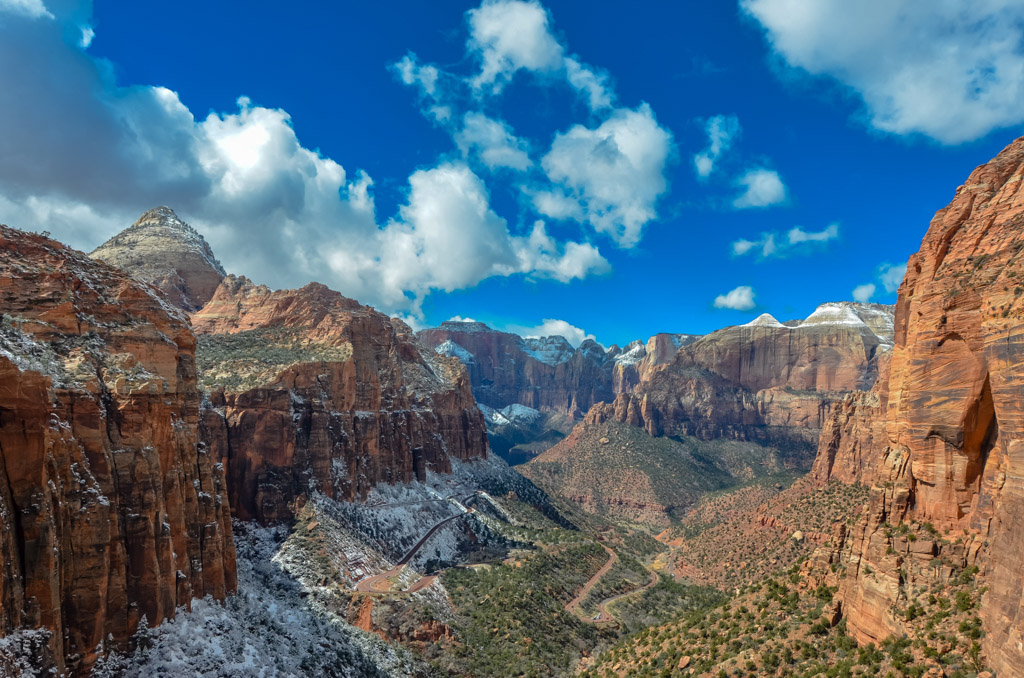
Zion Canyon Overlook in the winter. Photo by Karan Chawla on Unsplash.
Two Days in Zion
If one day in Zion National Park isn’t enough time, consider extending your trip. There were so many amazing things to see in Zion National Park that I could have easily spent more time there. If you have an additional day (or two), consider adding the following to your itinerary:
- Hike to Angels Landing – a strenuous hike to the top of Zion Canyon with spectacular views
- Note: the National Park Service announced that this iconic hike will require a permit as of April 1, 2022.
- Hike the Zion Narrows – a trail that runs along the riverbed in the narrowest part of Zion Canyon
- Visit Kolob Canyons – a less popular but scenic area on the western side of Zion National Park
Planning a Visit to Zion National Park
Springdale is the closest town to Zion and a great jumping off point from which to explore the park. Prices skyrocket during peak season, however, so book well in advance to get the best deals on lodging (or be prepared to stay further away from the park and drive more).
Zion Canyon Shuttle System
Note: the Shuttle Bus System is not running from November 29 to December 22, 2021. However, it will run during the holiday season from December 23 to January 1.
The first thing to know about planning a visit to Zion National Park is that a shuttle bus is required to enter Zion Canyon during most of the year. Parking is limited in the canyon, so the Park Service has closed the canyon to most vehicle traffic and implemented a Zion Canyon Shuttle System instead.
The shuttle bus starts at the Zion Visitor Center and drops off visitors at key stops along the Zion Canyon. Parking tends to fill up at the Visitor Center by 8:00 or 9:00 am in the high season, however, so arrive early. Another option is to park in Springdale and take the shuttle bus from Springdale into the park. The buses are both free but can be crowded in the summer months so expect to wait in line.
The shuttle buses typically run through the park’s high season beginning in February and ending in November. When Daniel and I arrived at Zion in early March 2021, the shuttle bus system was running on weekends only. Since we arrived mid-week, we got to drive into Zion Canyon without having to take the shuttle. It was great to be able to drive in the canyon, but the lack of parking presented its own unique challenges.
Pro Tip: Skip the shuttle bus and go by bike instead. You can rent an e-bike in Springdale and bike into Zion Canyon rather than take the bus. For more information about bicycling in Zion, check out the Zion National Park bicycling page.
Entrance Fees and Parking
The fee to enter Zion National Park is $35 per vehicle which is good for seven days. The fee for pedestrians arriving on foot or on a shuttle is $20 (children 15 and under are free).
I recommend buying the America the Beautiful Interagency Pass, however, which costs $80. This allows entry to all National Parks for an entire year, as well as most federal lands (including National Forests, Bureau of Land Management and more). Be sure to buy your pass online before arriving at the park in order to shorten the wait in line.
Note: oversize vehicles have to pay an addition fee to drive through the Zion-Mount Carmel Tunnel. Any vehicle that is 7’10” in width and/or 11’4″ in height or larger is required to have a tunnel permit. Rangers posted at both ends of the tunnel will covert two-way traffic to one-way for larger vehicles, ensuring safe passage.
Thankfully, our VW Rialta Motorhome fell just under the size restriction and we did not have to pay the $15 tunnel fee (although it would have been kinda fun to drive through the tunnel with no oncoming traffic…)
Lodging
Zion National Park Lodge is the only hotel located inside the National Park. The Lodge is located inside Zion Canyon and guests staying at the lodge get special access to drive into the canyon. This convenience does not come cheap, though, and prices start at $220 for a room. These rooms also tend to book up months in advance. There are also several hotels to choose from in Springdale, but these can also be quite expensive during peak season.
Camping is a more affordable option in Zion National Park. There are two campground in Zion Canyon – these tend to fill up quickly so advance reservations are recommended.
During our visit to Zion National Park, we stayed at the Zion Canyon Campground just outside of the park entrance in Springdale. This privately-owned campground is located right on the river with incredible views of Zion Canyon.
What to Bring
When entering a wilderness area or National Park, I always come prepared with water and snacks to last me throughout the day. While there are restaurants available at the Zion National Park Lodge, it may not be feasible to eat there due to long lines or changes in the itinerary. Check the weather forecast and be prepared with a sunhat and sunscreen or raingear as appropriate.
Since this itinerary includes hiking, wear comfortable shoes. Here is a list of some of my favorite hiking gear:
- Hiking Shoes – Sturdy hiking or walking shoes are a must. Personally, I’m a big fan of Altra Lone Peak Trail Running Shoes. I pair them with Dirty Girl Gaiters to keep sand and rocks from getting into my shoes.
- Socks – Good thick socks are also important. I usually wear a pair of double-walled Wrightsock Coomesh II socks with my Altras. For longer hikes, I switch to Injinji Midweight socks to prevent toe blisters.
- Backpack – A backpack is essential so you can carry water, layers, and snacks. I love Ospreys and use the Osprey Manta pack which is technically a men’s pack (because I have a longer torso than most women). The women’s equivalent is the Osprey Mira pack.
- Hiking Poles – Hiking poles reduce pressure on your joints and help maintain your balance if you trip. My current favorites are the LEKI Micro Vario Carbon Trekking Poles because they are super lightweight and fold down to easily fit into my suitcase.
- Sun Hat – Protect your face (and scalp) with a broad sun hat. This sun hat is great because it has a wide brim and no back so it doesn’t bump into my backpack.
- Sun Shirt – Protect your neck and arms from the sun with a long-sleeved sun shirt. The Columbia Tamiami II is highly rated and comes with built-in UPF 40 sun protection.
- Sun Screen – Apply sun screen before hitting the trail and bring some along in case you need to reapply. I like these Banana Boat 1-oz tubes of sunscreen because they are super tiny and hardly take up any room in my bag.
- Camera – I love taking photos and always bring a camera along on my hiking trips. I use the Canon PowerShot G7X Mark II because it is lightweight yet has many advanced features.
- Electronics – if you are using your phone for navigation, bring a portable battery such as the Anker portable battery charger. For longer hikes or backpacking trips, consider bringing a Garmin InReach Explorer. This is a Personal Locator Device (PLB) that enables you to trigger a SOS call to search and rescue and 2-way texting over satellite.
Like this article? Pin it!

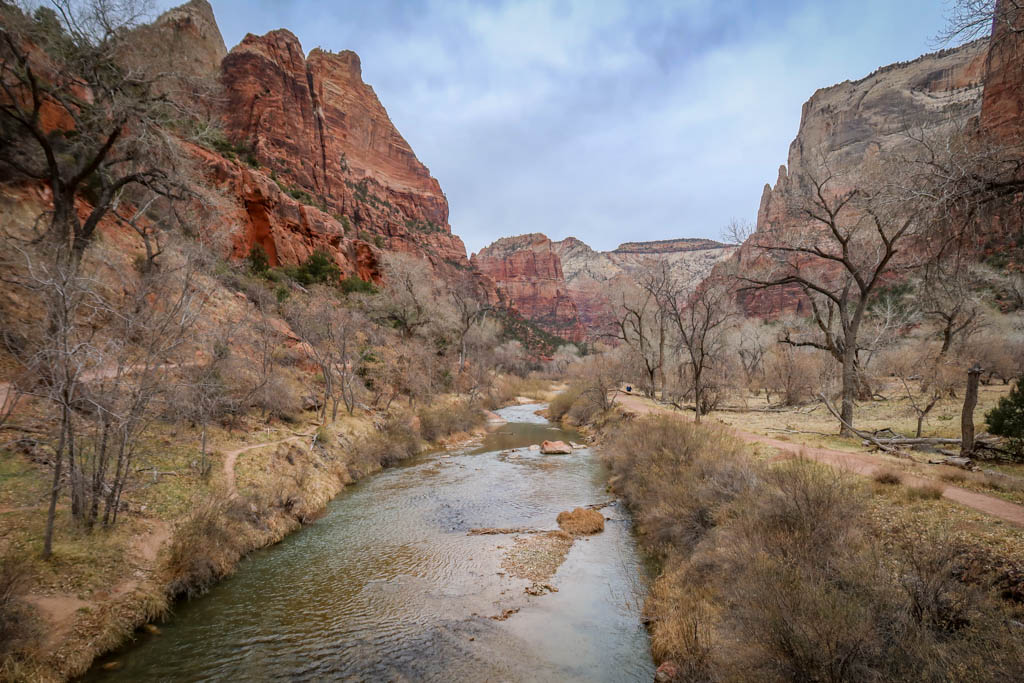





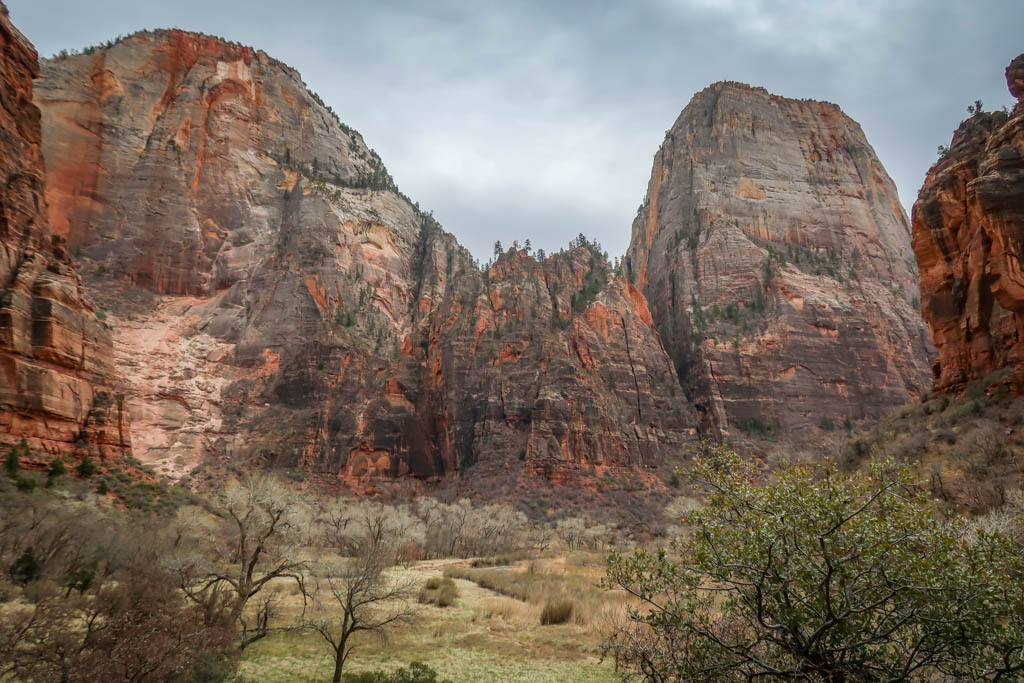
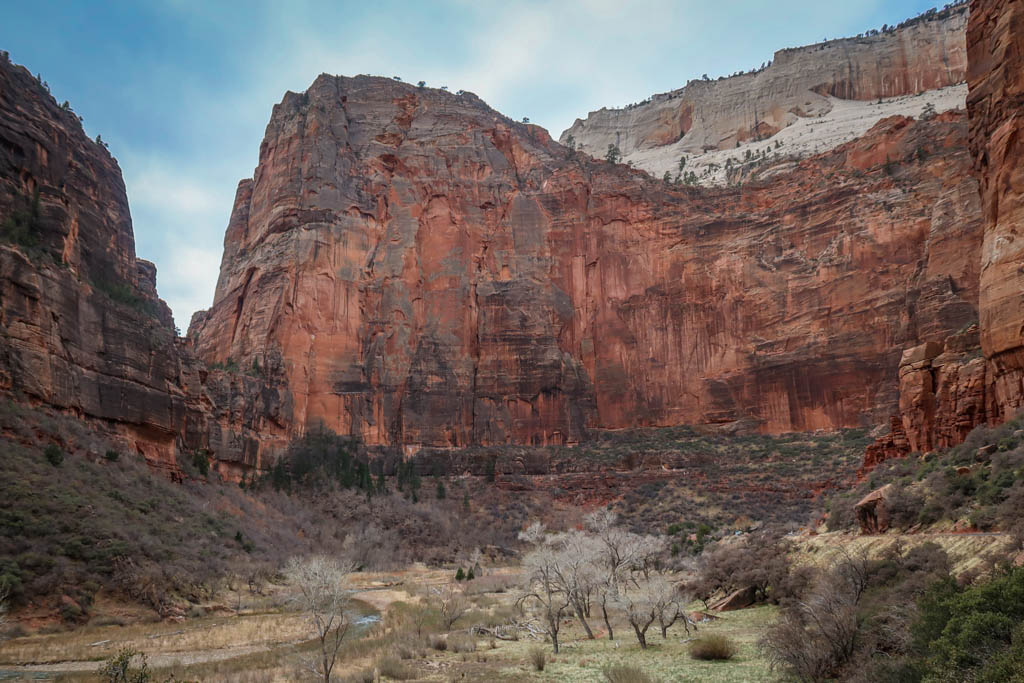

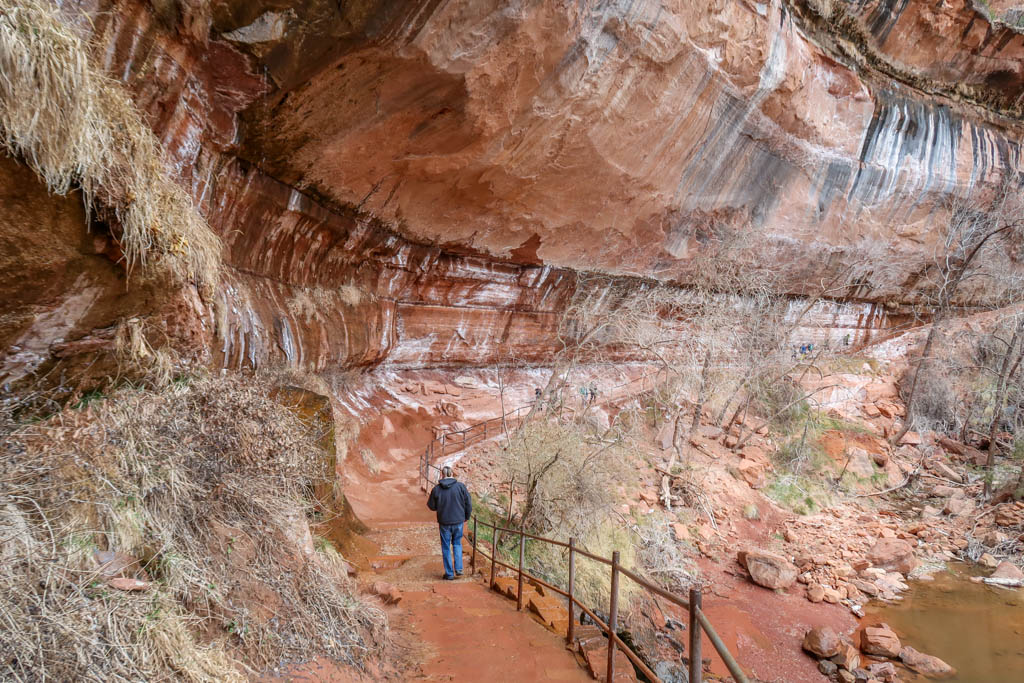
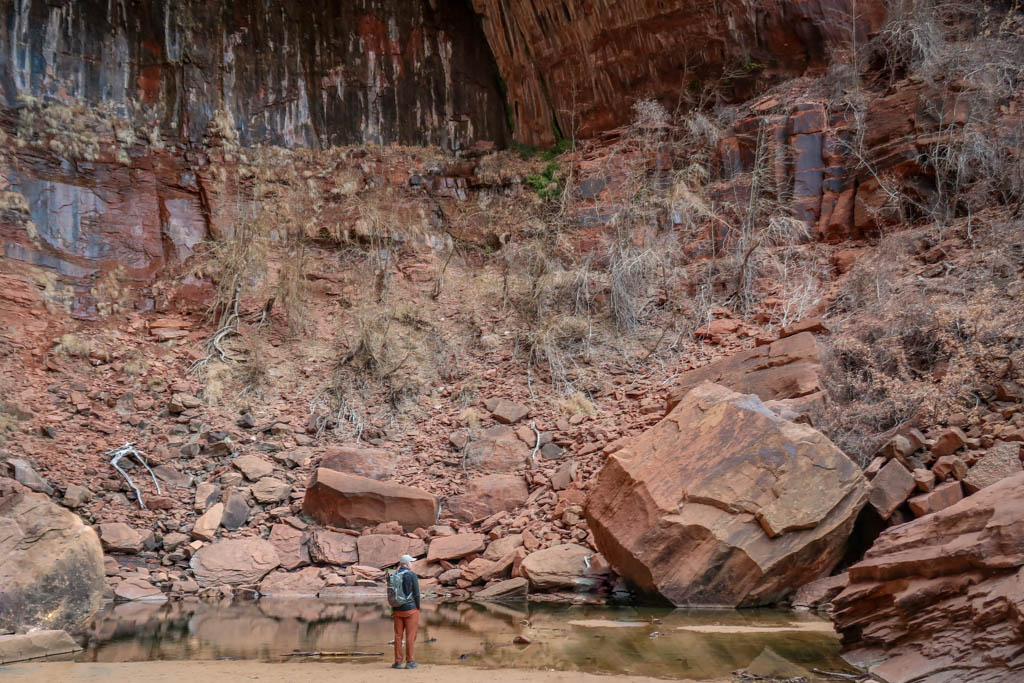

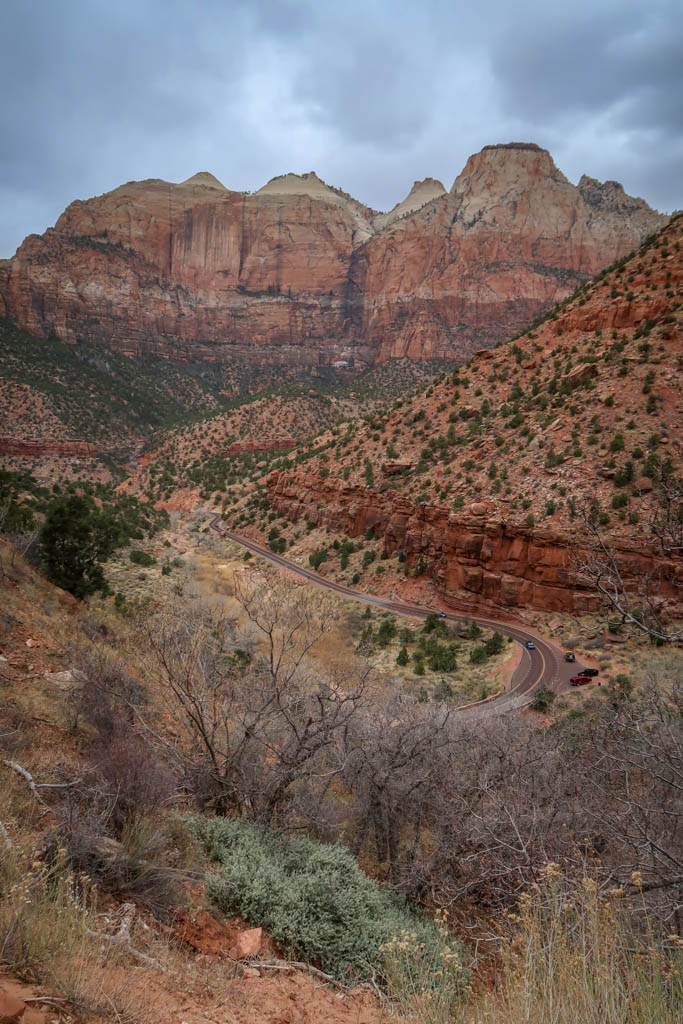
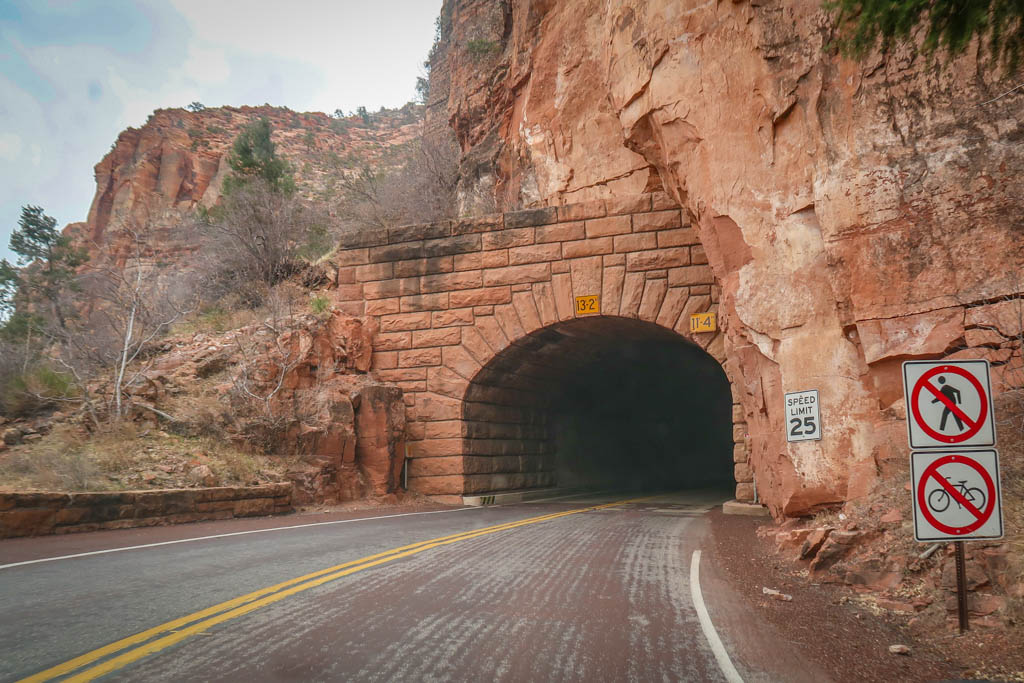



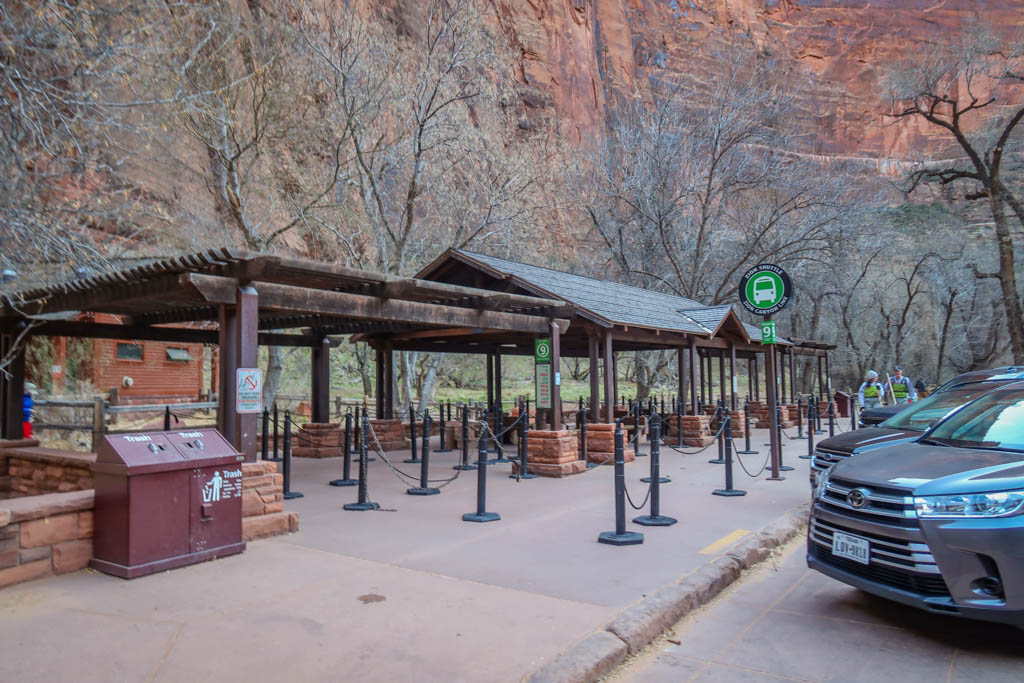
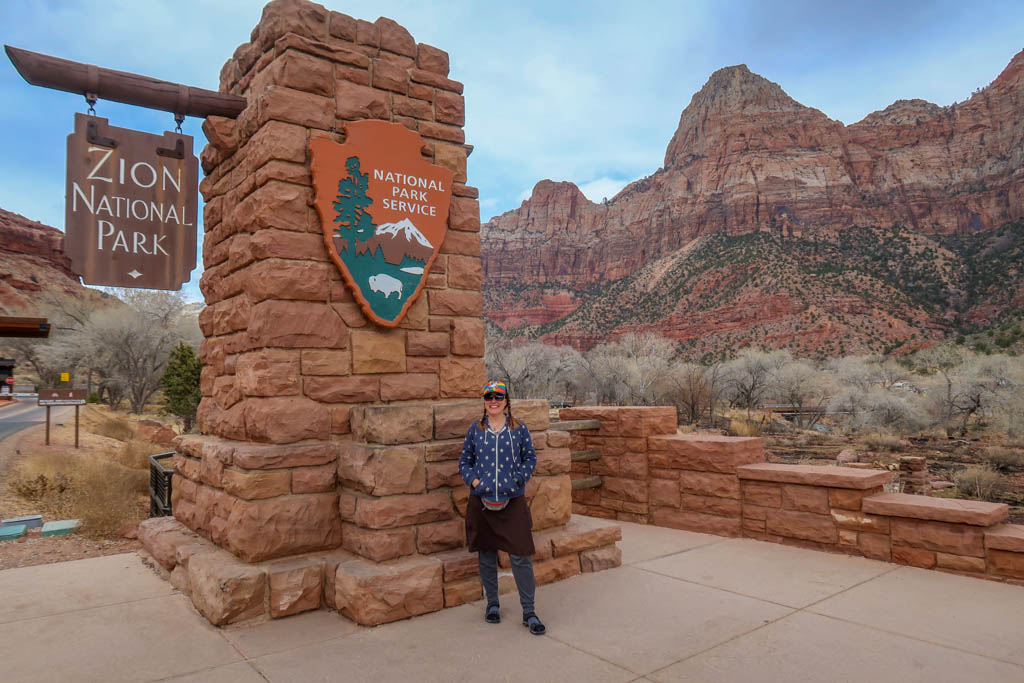

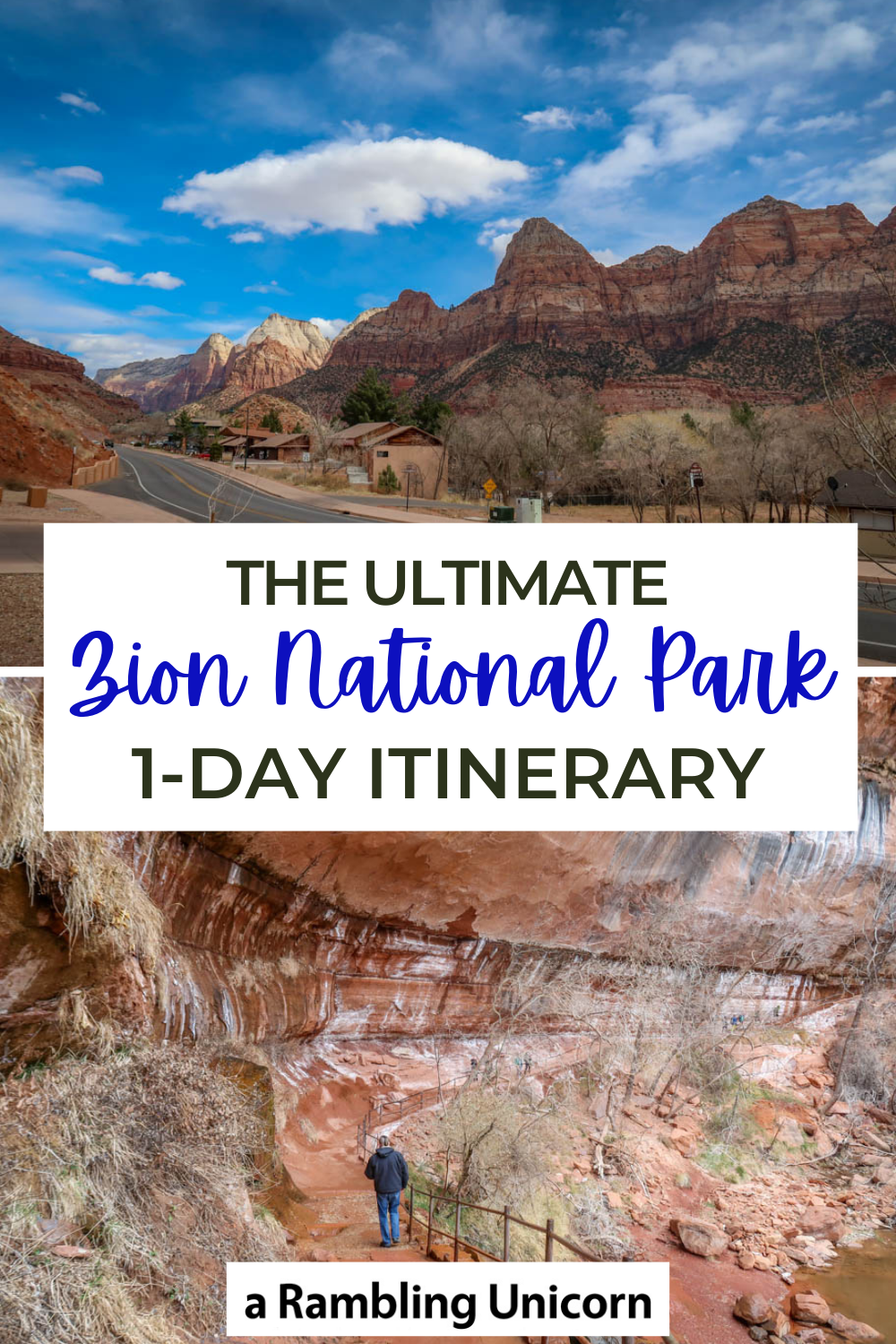



Rent ebikes in the local town and skip the buses altogether. More fun and traveling to the hikes at your own pace .Thank me later
Thanks for the excellent suggestion Johnny! I’ve updated the article to include this pro tip. Thanks!
Beautiful photos! My dream is to visit when the snow is there, the contrast of the red/orange rocks and the white snow is so gorgeous 🙂
Thanks Samantha! I bet that will be lovely. Plus you won’t have to worry about as many other visitors during the winter ☺ï¸
The photos are so incredible! I’ve always wanted to visit. The tunnel looks really cool, but I bet I’d get slightly spooked going through it, knowing me. Ha!
The tunnel is pretty amazing!
Wow amazing. It looks like such a beautiful place to hike and explore. I’ve never really explored Utah too much. I’ll have to get out there at some point in my life!
Thanks Nina! It’s such a lovely National Park. I hope you get to visit someday.
Wow, I hope i have the chance to hike in this beautiful park. I will save your valuable tips when I go there. Great pictures.
Thanks for the kind comment. It’s a really amazing place. Hope you get to make it there some day.
I lived in Utah for almost a year and never made it to any of the National Parks – more bucket list things to add, this list is never-ending! Gorgeous photos and post, thanks for sharing Katy!
Thanks! Sadly we only made it to 1 National Park in Utah. I have many more parks to visit too 😊😊
Zion’s been on my list for a while now. I found so much valuable info here. Hope I can soon make it a reality. Beautiful imagery too! â¤
Thanks Mateja. I hope so too!
Great itinerary and I love the pictures illustrating this great guide to one of the top places in my bucket list I still need to visit and hike no stop for days. I love your motor home too. I am just back from a long trip on a rental motorhome and I absolutely loved it.
Thanks Paula! Traveling in a motorhome is a fun way to road trip 🙂
This place has been on my bucket list for so long!!! I have to get there, it looks incredible!
It looks like a beautiful place. I love the bike idea!